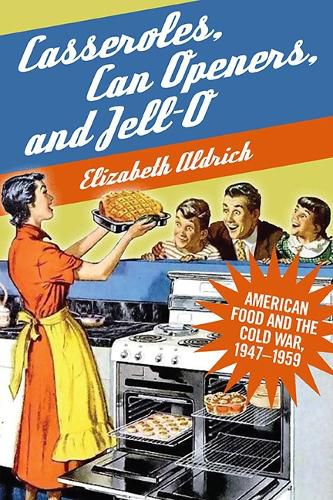Readings Newsletter
Become a Readings Member to make your shopping experience even easier.
Sign in or sign up for free!
You’re not far away from qualifying for FREE standard shipping within Australia
You’ve qualified for FREE standard shipping within Australia
The cart is loading…






An "all-you-can-eat" tour of American life in the postwar period, told through the foods we loved.
Silver Winner of the 2023 Foreword INDIES Book of the Year Award in the Popular Culture category
Casseroles, Can Openers, and Jell-O provides insight on how American food culture developed during the early years of the Cold War. Highlighting gender roles, the promotion of democracy and capitalism, and the impact of mass market advertising, the book draws on cookbooks, popular magazines, television advertisements, government publications, and industry pamphlets to paint a vivid picture of what Americans ate and how food was enlisted as a symbol of America's postwar dominance. Featuring eighty recipes, the book shows how the food industry promoted new processed foods to an increasingly industrialized nation. For anyone wanting to better understand how America's food culture developed during the mid-twentieth century and for those who were raised on TV dinners and Campbell's soup, the book offers an engaging and evocative look at the story of American cuisine during the early years of the Cold War.
$9.00 standard shipping within Australia
FREE standard shipping within Australia for orders over $100.00
Express & International shipping calculated at checkout
An "all-you-can-eat" tour of American life in the postwar period, told through the foods we loved.
Silver Winner of the 2023 Foreword INDIES Book of the Year Award in the Popular Culture category
Casseroles, Can Openers, and Jell-O provides insight on how American food culture developed during the early years of the Cold War. Highlighting gender roles, the promotion of democracy and capitalism, and the impact of mass market advertising, the book draws on cookbooks, popular magazines, television advertisements, government publications, and industry pamphlets to paint a vivid picture of what Americans ate and how food was enlisted as a symbol of America's postwar dominance. Featuring eighty recipes, the book shows how the food industry promoted new processed foods to an increasingly industrialized nation. For anyone wanting to better understand how America's food culture developed during the mid-twentieth century and for those who were raised on TV dinners and Campbell's soup, the book offers an engaging and evocative look at the story of American cuisine during the early years of the Cold War.